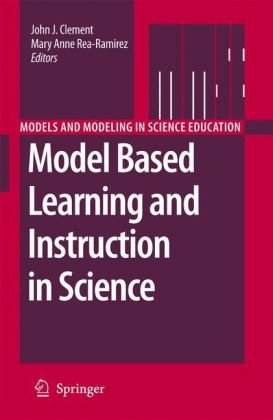

Most ebook files are in PDF format, so you can easily read them using various software such as Foxit Reader or directly on the Google Chrome browser.
Some ebook files are released by publishers in other formats such as .awz, .mobi, .epub, .fb2, etc. You may need to install specific software to read these formats on mobile/PC, such as Calibre.
Please read the tutorial at this link: https://ebookbell.com/faq
We offer FREE conversion to the popular formats you request; however, this may take some time. Therefore, right after payment, please email us, and we will try to provide the service as quickly as possible.
For some exceptional file formats or broken links (if any), please refrain from opening any disputes. Instead, email us first, and we will try to assist within a maximum of 6 hours.
EbookBell Team

5.0
78 reviews 
ISBN 10: 1402064934
ISBN 13: 978-1402064937
Author: John Clement, Mary Anne Rea-Ramirez
This book describes new, model based teaching methods for science instruction. It presents research that describes these new methods in a very diverse group of settings: middle school biology, high school physics, and college chemistry classrooms. Mental models in these areas such as understanding the structure of the lungs or cells, molecular structures and reaction mechanisms in chemistry, or causes of current flow in electricity are notoriously difficult for many students to learn. Yet these lie at the core of conceptual understanding in these areas. The studies focus on a variety of teaching strategies such as discrepant questioning, analogies, animations, model competition, and hands on activities. Five different levels of organization for teaching strategies are described, from those operating over months (design of the sequence of units in a curriculum) to those operating over minutes (teaching tactics for guiding discussion minute by minute).
Front Matter
Basic Concepts and Background for Model Based Learning
Student/Teacher Co-construction of Visualizable Models in Large Group Discussion
An Instructional Model Derived from Model Construction and Criticism Theory
Introduction to Model Based Teaching Strategies
Determining Target Models and Effective Learning Pathways for Developing Understanding of Biological Topics
Co-construction and Model Evolution in Chemistry
Target Model Sequence and Critical Learning Pathway for an Electricity Curriculum Based on Model Evolution
Case Study of Model Evolution in Electricity: Learning from Both Observations and Analogies
Qualitative Research on Specific Strategies
A Competition Strategy and Other Modes for Developing Mental Models in Large Group Discussion
What If Scenarios For Testing Student Models in Chemistry
Applying Modeling Theory to Curriculum Development: From Electric Circuits to Electromagnetic Fields
Developing Complex Mental Models in Biology Through Model Evolution
Role of Discrepant Questioning Leading to Model Element Modification
Using Analogies in Science Teaching and Curriculum Design: Some Guidelines
Model Based Reasoning Among Inner City Middle School Students
Six Levels of Organization for Curriculum Design and Teaching
Back Matter
model based learning and instruction in science
what is model based learning
model based learning example
model based approach meaning
model based vs model free learning
model based instruction
Tags: John Clement, Mary Anne Rea Ramirez, Model Based Learning, Instruction, Science, Models, Modeling, Science Education, 2008